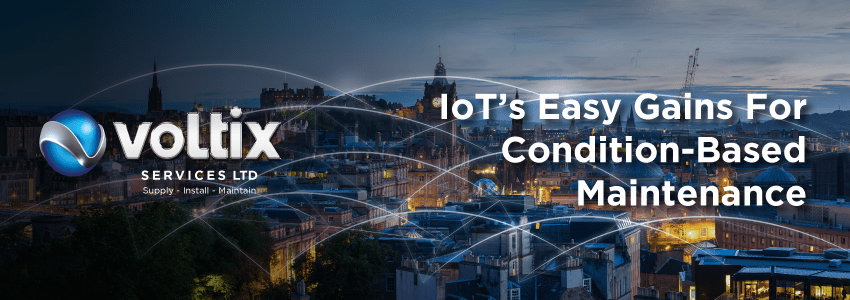How Innovation Optimises Condition-Based Maintenance
Everything technology touches stands to be transformed. The scope of condition-based maintenance to optimise operations across business and industry is innovation in action for facilities maintenance providers.
At Voltix Services, our IoT innovations give our teams advanced maintenance insights for precision scheduling and reduced downtime, with many benefits over traditional methods. In this blog, we take a closer look at condition-based maintenance and its benefits over time-based preventative maintenance and provide examples of condition-based maintenance in practice within our services.
WHAT IS CONDITION-BASED MAINTENANCE?
Condition-based maintenance deviates from traditional preventative maintenance approaches by using monitoring and inspections to guide maintenance schedules and interventions. Traditionally and in time-based preventative maintenance systems, maintenance would be conducted around calendar-based predictions.
The latter relies on estimates, which increases the likelihood of unexpected and undetected faults and risk of unnecessary reactive maintenance callouts. The real-time monitoring capabilities provided by IoT technologies and scheduled tests and investigations give facilities maintenance providers proactive insights for better maintenance, cost savings, and optimised scheduling.
BENEFITS OF CONDITION-BASED MAINTENANCE
Your hardest working equipment has special maintenance requirements. Time-based maintenance often fails to account for the fact that some machines run at a greater intensity and so may need attention outside of scheduled calendar predictions. Condition-based maintenance allows maintenance professionals to react to analytics-derived alerts around irregularities for fine-tuned maintenance.
This means reduced unnecessary maintenance visits and, with them, down time. In turn, this has a bearing on cost and cost to operations.
Monitorable metrics can provide specific diagnostic insights around key machinery. For example, the real-time detection of vibration can indicate wear and tear that can be immediately addressed. This drives automation and removes guesswork and could circumvent the need for expensive replacements or extensive repairs down the line.
Better maintained equipment runs more efficiently. Combined with smart energy monitoring solutions, this aids in achieving environmental objectives and reducing emissions through adjusted energy strategies.
Built environments that are responsive to occupants are becoming the norm – and we are set to see this increase in scope into the future. Data logging is central to creating buildings that are responsive to occupants in real time. An example of this is adjusting heating and cooling around actual occupancy times. This reduces the waste associated with temperature regulation in unoccupied buildings and saves on utilities costs.
CONDITION-BASED MAINTENANCE IN PRACTICE: FACILITIES MAINTENANCE EXAMPLES
Flood Detection through automated phone calls, texts, and emails in a flood. Early flood detection has the potential to save tens of thousands of pounds – and we have seen this in action through weekend alerts that would have caused costly damage if left until Monday. Some insurers insist on this and others offer discounted premiums where automated flood detection is installed.
Remote Temperature Monitoring sets predefined values and sends alerts in the event of undesirable changes. This could be used for everything from machine operating temperature thresholds to ensured refrigeration or cold chain integrity.
Critical Asset Failure Alerts empower maintenance professionals to act and so prevent costly machine failures and downtime. An example of this is air-conditioning failure in server rooms. These alerts mean technicians can address air-conditioning issues to keep servers running smoothly.
Uptime Data Logging removes areas of dispute around runtime of equipment through data collection and record-keeping. This improves tenant-landlord relationships and evidenced delivery. As above, it also allows for the buildings processes to be tailored around occupancy for data-driven run time optimisation. At Voltix Services, our smart monitoring capabilities have resulted in issues being identified and resolved before managers have become aware that there was a problem for seamless operations.
DIGITALLY TRANSFORM YOUR MAINTENANCE STRATEGY
Contact Voltix Services today to find out more about how IoT condition-based maintenance can be incorporated into your building.

